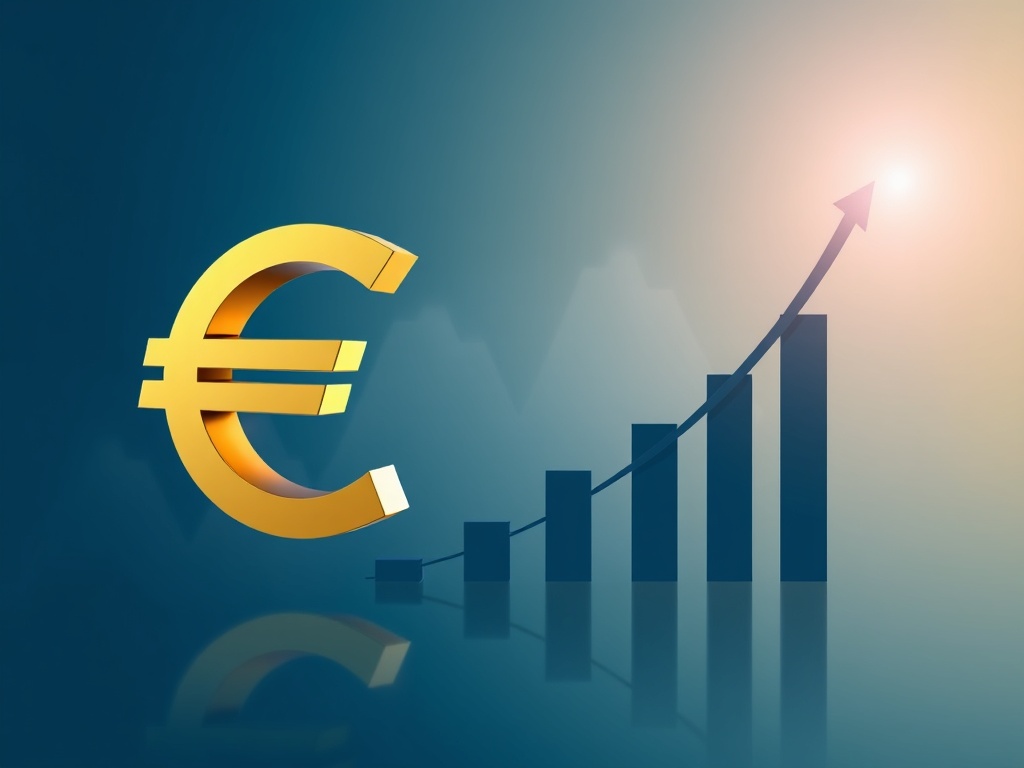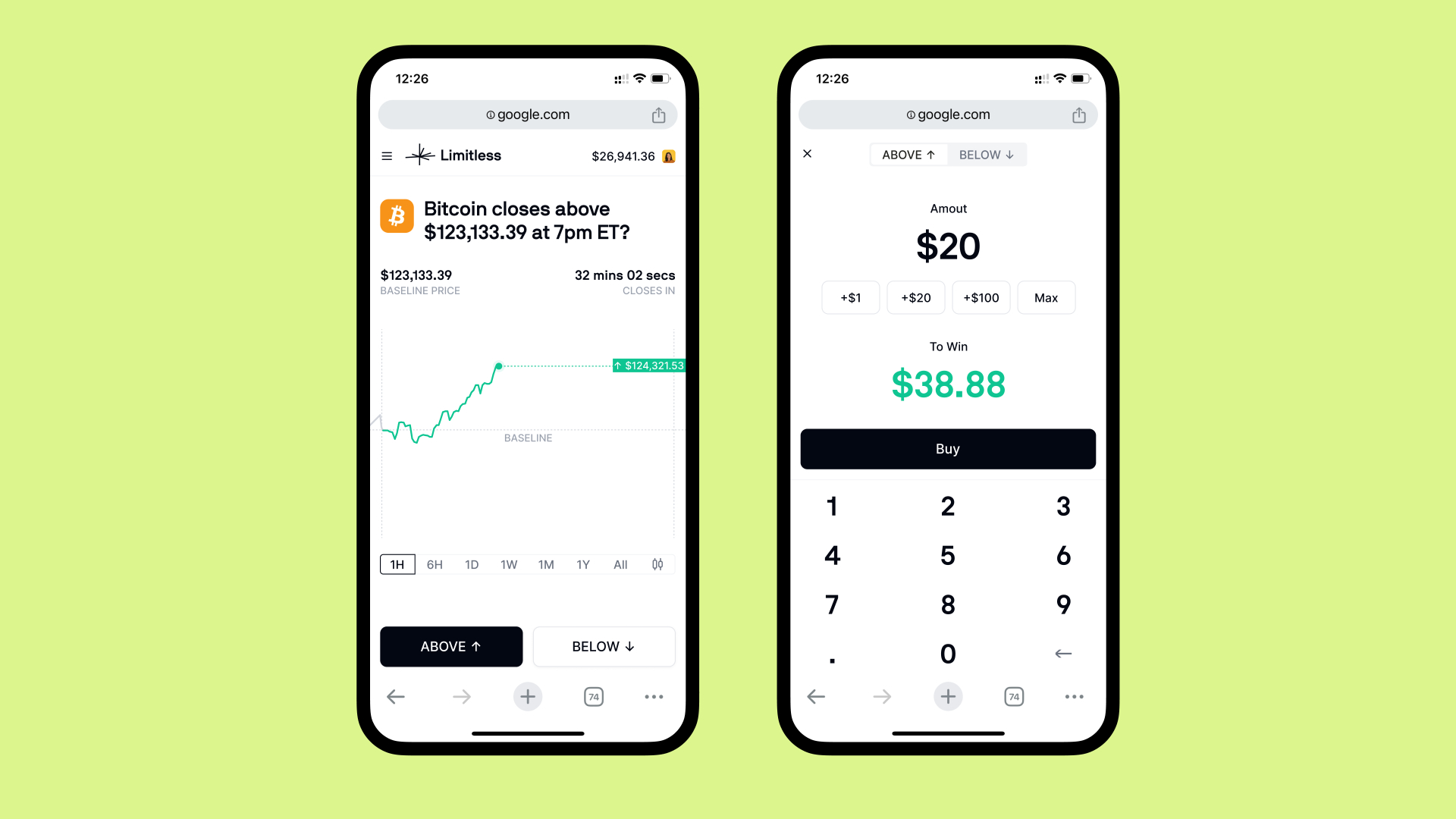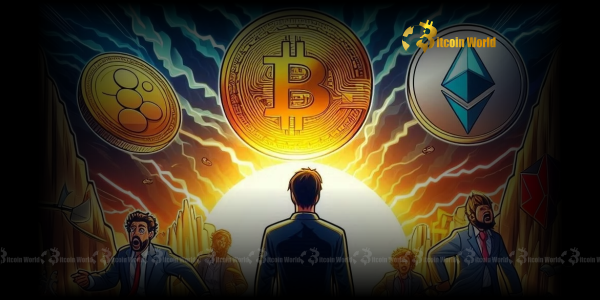BitcoinWorld

EUR/USD: UBS Forecasts 1.20 Target, Signaling Euro’s Ascendant Path
In the dynamic world of finance, where cryptocurrency markets often grab headlines with their rapid fluctuations, traditional currency pairs like EUR/USD remain a cornerstone of global economic stability and a critical indicator for investors. For those accustomed to the wild swings of Bitcoin and Ethereum, understanding the more measured yet significant movements in the Forex market can offer valuable insights into broader economic trends and even potential hedges or opportunities. Recently, a significant EUR/USD forecast has emerged from global financial giant UBS, predicting a notable strengthening of the Euro against the US Dollar, targeting the 1.20 mark. This development isn’t just a headline for traditional traders; it signals shifts in global economic power dynamics that can indirectly influence sentiment and capital flows across all asset classes, including digital assets.
What’s Driving the UBS EUR/USD Forecast?
UBS, a leading global financial services company, has put forth a compelling case for the Euro’s appreciation against the US Dollar. Their EUR/USD forecast of 1.20 is not merely an arbitrary number; it is rooted in a comprehensive analysis of macroeconomic factors, central bank policies, and evolving market sentiment. The primary drivers underpinning this optimistic outlook for the Euro include:
- European Central Bank (ECB) Policy: The ECB has maintained a hawkish stance, indicating a commitment to combat inflation through sustained interest rate hikes. This contrasts with expectations for the Federal Reserve (Fed), which is perceived to be nearing the end of its tightening cycle or even contemplating rate cuts in the near future. Higher interest rates in the Eurozone make Euro-denominated assets more attractive to international investors, increasing demand for the currency.
- Diverging Economic Performance: While the US economy shows signs of slowing, with concerns about a potential recession lingering, the Eurozone has demonstrated resilience. Despite initial fears, the region has largely navigated the energy crisis and is showing signs of steady, albeit modest, growth. This relative economic stability enhances the Euro’s appeal.
- Energy Price Normalization: The significant drop in natural gas prices from their 2022 peaks has provided a substantial tailwind for the Eurozone economy. Reduced energy costs alleviate inflationary pressures and improve the region’s terms of trade, boosting the Euro’s fundamental strength.
- Current Account Balance Improvement: The Eurozone’s current account balance has shown a marked improvement, shifting from deficit to surplus. This positive development indicates stronger external demand for Eurozone goods and services, contributing to capital inflows and supporting the Euro.
UBS’s analysis suggests that these factors collectively create a robust environment for the Euro to gain ground. The market’s anticipation of these shifts often precedes the actual economic data, driving currency movements.
Understanding the Euro USD Exchange Rate Dynamics
The Euro USD exchange rate is a reflection of the economic health, monetary policy, and geopolitical stability of two of the world’s largest economic blocs: the Eurozone and the United States. Its movements are influenced by a complex interplay of forces. Historically, the EUR/USD pair has seen significant fluctuations, reacting to major global events from financial crises to trade wars. Currently, the dynamics are largely shaped by:
| Factor | Impact on Euro (EUR) | Impact on US Dollar (USD) |
|---|---|---|
| Interest Rate Differentials | Higher rates attract capital, strengthening EUR. | Lower rates or rate cut expectations reduce USD appeal. |
| Economic Growth | Stronger growth signals a healthy economy, supporting EUR. | Slowing growth or recession fears weaken USD. |
| Inflation Outlook | Persistent inflation may lead to more ECB hikes, boosting EUR. | Declining inflation may signal Fed pause/cuts, weakening USD. |
| Geopolitical Stability | Increased stability in Europe enhances investor confidence in EUR. | Global risk-off sentiment often favors USD as a safe haven. |
The interplay of these factors creates a dynamic environment for the Euro USD exchange rate, making it one of the most actively traded currency pairs globally. Traders and investors constantly monitor economic data releases, central bank speeches, and geopolitical developments to anticipate future movements.
A Deeper Dive into Forex Market Analysis: Beyond the Headlines
For any serious participant in the Forex market, a superficial understanding of news headlines is insufficient. A thorough Forex market analysis involves both fundamental and technical approaches. Fundamental analysis focuses on economic data, government policies, and geopolitical events that affect currency values. Technical analysis, on the other hand, involves studying price charts and indicators to identify patterns and predict future price movements.
Fundamental Factors Driving EUR/USD:
- Central Bank Divergence: The differing paths of the ECB and the Fed are paramount. The ECB’s continued focus on fighting inflation, even at the risk of slower growth, supports a stronger Euro. Conversely, the Fed’s potential pivot towards easing, driven by concerns about economic slowdown or financial stability, could weigh on the Dollar.
- Economic Resilience: The Eurozone’s ability to withstand various shocks, including the energy crisis and high inflation, has surprised many analysts. Indicators like Purchasing Managers’ Index (PMI) data, industrial production, and consumer confidence surveys are closely watched for signs of sustained recovery.
- Trade Balances and Capital Flows: A country or bloc with a persistent trade surplus tends to see its currency appreciate as foreign demand for its goods and services translates into demand for its currency. Similarly, robust foreign direct investment (FDI) inflows can strengthen a currency.
Technical Considerations:
From a technical perspective, the EUR/USD pair has shown a tendency to respect key support and resistance levels. A move towards 1.20 would represent a significant breach of recent trading ranges and could trigger further momentum buying. Traders often look for:
- Breakouts: A clear break above a resistance level, like the 1.10 or 1.12 marks, often signals strong bullish momentum.
- Moving Averages: Crossovers of short-term and long-term moving averages can indicate shifts in trend.
- Relative Strength Index (RSI): This momentum oscillator helps identify overbought or oversold conditions, providing potential entry or exit signals.
Combining both fundamental and technical Forex market analysis provides a more robust framework for making informed trading decisions. However, the market is also susceptible to sudden shifts based on unexpected news or sentiment changes.
The Shifting Sands: What’s Next for the USD Outlook?
The other side of the EUR/USD equation is the US Dollar. A strengthening Euro inherently implies a weakening US Dollar, at least in relative terms. The current USD outlook is influenced by several factors that suggest a period of depreciation, especially against major currencies like the Euro.
- Federal Reserve Policy Pivot: The market widely anticipates that the Fed is either at or very near the end of its tightening cycle. Future rate hikes are likely to be limited, and discussions about potential rate cuts in late 2024 or 2025 are gaining traction. This dovish shift in monetary policy would reduce the yield advantage of US assets, making the Dollar less attractive.
- Inflation Deceleration: While inflation remains above the Fed’s target, there are clear signs of disinflation across various sectors of the US economy. This reduction in price pressures gives the Fed more room to ease its monetary policy without risking a resurgence of inflation.
- Economic Slowdown Concerns: Despite a resilient labor market, other economic indicators suggest a slowdown in the US economy. Manufacturing activity has contracted, and consumer spending, while robust, faces headwinds from high interest rates and persistent inflation. A significant slowdown or recession would typically lead to a weaker Dollar.
- Growing US Debt: The rising US national debt and fiscal deficits are long-term concerns that can weigh on the Dollar. While not an immediate trigger for depreciation, the sheer volume of government borrowing can erode investor confidence over time.
- Return of Risk Appetite: In times of global uncertainty, the US Dollar often acts as a safe-haven currency. However, if global economic conditions stabilize and risk appetite returns, investors may shift capital away from safe-haven assets like the Dollar towards higher-yielding or growth-oriented assets elsewhere, including emerging markets or even alternative assets like cryptocurrencies.
The confluence of these factors paints a picture of a Dollar that may struggle to maintain its strength, especially against currencies whose central banks are perceived to be more hawkish or whose economies show greater relative resilience. This shifting USD outlook is a critical component of the UBS forecast.
Navigating the Waves: Practical Currency Trading Strategy
Given the UBS EUR/USD forecast and the broader market dynamics, what does this mean for traders and investors? Developing a robust currency trading strategy is essential for navigating these anticipated movements. Here are some actionable insights:
- Monitor Central Bank Communications: Pay close attention to speeches from ECB and Fed officials, as well as minutes from their policy meetings. Any hints about future rate decisions or changes in economic outlook can trigger significant market reactions.
- Track Key Economic Data: Keep a close watch on inflation reports (CPI, PPI), employment figures (NFP, unemployment rates), GDP growth, and manufacturing/services PMIs for both the Eurozone and the US. These data points provide concrete evidence of economic trends.
- Consider Interest Rate Differentials: The carry trade, where investors borrow in a low-interest-rate currency and invest in a high-interest-rate currency, becomes more attractive as the interest rate differential widens in favor of the Euro.
- Risk Management is Paramount: Currency markets can be volatile. Always use stop-loss orders to limit potential losses and define your risk-to-reward ratio before entering a trade. Never risk more capital than you can afford to lose.
- Diversify Your Portfolio: While the EUR/USD forecast is compelling, it’s prudent to diversify across different currency pairs or asset classes to mitigate risk. For crypto investors, understanding these macro Forex trends can inform decisions on stablecoin holdings or the impact of a weaker USD on Bitcoin’s purchasing power for international buyers.
- Look for Technical Confirmation: Before entering a trade based on fundamental analysis, look for technical signals that confirm the direction. This could include price breaking key resistance levels, bullish candlestick patterns, or indicators signaling momentum.
For those looking to capitalize on the anticipated Euro strength, a long position on EUR/USD would be the primary trade. However, always conduct your own due diligence and consider consulting with a financial advisor. The market can be unpredictable, and forecasts, while informed, are not guarantees.
| Strategy Element | Actionable Insight |
|---|---|
| Entry Point | Consider entering long on EUR/USD during pullbacks to strong support levels or on a confirmed breakout above minor resistance. |
| Target Price | Initial targets around 1.15-1.18, with the ultimate UBS target of 1.20 as a long-term objective. |
| Stop Loss | Place stop loss below recent significant low or strong support to protect capital. |
| Risk Management | Allocate a small percentage of trading capital per trade (e.g., 1-2%). |
| Monitoring | Regularly review economic calendars, news feeds, and technical charts. |
The Broader Implications: Benefits and Challenges
A strengthening Euro against the USD carries significant implications beyond just currency traders. For the Eurozone, a stronger Euro can make imports cheaper, helping to alleviate inflationary pressures and reducing the cost of raw materials and energy for businesses. It also enhances the purchasing power of Eurozone consumers when traveling abroad. However, it can make Eurozone exports more expensive for international buyers, potentially impacting export-oriented industries.
Conversely, for the United States, a weaker Dollar makes US exports more competitive on the global market, potentially boosting manufacturing and trade. However, it also makes imports more expensive, which could contribute to inflationary pressures and reduce the purchasing power of US consumers when buying foreign goods or traveling abroad.
For the cryptocurrency market, a weaker USD can sometimes be seen as a positive for dollar-denominated assets like Bitcoin. If the Dollar loses value, investors seeking to preserve purchasing power might look towards alternative assets. Furthermore, a weaker USD can make Bitcoin and other cryptocurrencies cheaper for international buyers using stronger currencies, potentially increasing demand. However, the correlation is not always direct and depends on a multitude of other factors, including overall market sentiment, regulatory developments, and specific crypto-related news.
Conclusion: A Compelling Outlook for the Euro
UBS’s confident EUR/USD forecast of 1.20 signals a significant shift in the global currency landscape. Driven by the ECB’s hawkish stance, the Eurozone’s economic resilience, and the anticipated dovish pivot by the Federal Reserve, the Euro appears poised for a period of appreciation against the US Dollar. This outlook is not merely a technical projection but is deeply rooted in fundamental macroeconomic divergences between the two major economies. While the journey to 1.20 may encounter market volatility and unforeseen events, the underlying drivers suggest a compelling case for Euro strength. For investors across all asset classes, including the dynamic world of cryptocurrencies, understanding these macro Forex trends is crucial for informed decision-making and navigating the evolving global financial environment. The ascendant path of the Euro could redefine capital flows and investment strategies in the coming months, making this a development to watch closely.
To learn more about the latest Forex market trends, explore our article on key developments shaping the Euro and US Dollar exchange rates, and their impact on global liquidity and institutional adoption.
This post EUR/USD: UBS Forecasts 1.20 Target, Signaling Euro’s Ascendant Path first appeared on BitcoinWorld and is written by Editorial Team





